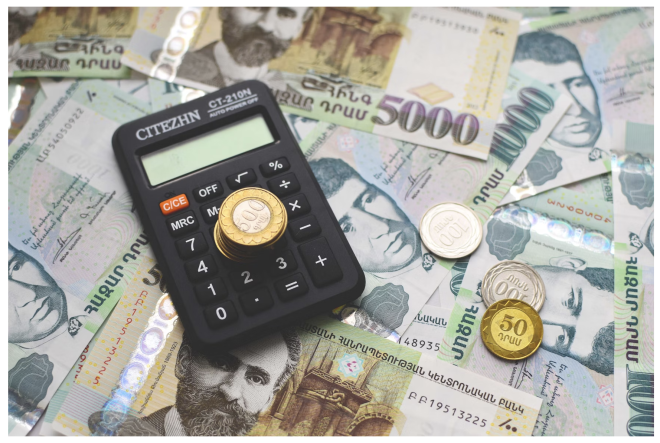- Change theme
Managing Cash Flow in the Food and Drink Industry: Challenges and Solutions

You can have the best chef in town and serve Instagram-worthy plates, but if your cash flow is shaky, your business won't survive.
01:21 23 July 2025
You can have the best chef in town and serve Instagram-worthy plates, but if your cash flow is shaky, your business won't survive. That's why cash flow management food industry is essential.
Restaurants run on razor-thin margins where timing is everything. Your rent doesn't wait for busy weekends, and staff paychecks are due whether you served 50 or 200 customers. Without adequate supervision, even well-liked local establishments may experience financial difficulties as a result of inadequate financial knowledge.
Instead of depending solely on chance, a restaurant cash management system gives you real-time financial control so you can make wise decisions.
Here's how to develop financial reserves and transform your weak operation into a strong business.
Understanding Cash Flow Challenges in the Food and Drink Industry
A full house never equals secure economic balance, and restaurant owners understand this.
Here are some cash flow challenges consistently affecting food and drink businesses:
- High Fixed Costs: Rent, licensing, salaries, and insurance remain constant during low activity, creating high breakeven points before profit.
- Perishable Inventory: Fresh ingredients have expiration dates. If you order too much, you could incur losses.
- Delayed Receivables: Catering and private events often have payment terms. Most owners front costs for weeks before getting paid.
Solutions for Effective Cash Flow Management
Although these challenges seem daunting, they're manageable. Some restaurant cash flow solutions include building predictability and flexibility into the business’s financial operations.
-
Implement Robust Financial Tracking
As a restaurant operator, it is essential to check your numbers daily. When you track money flow daily, you catch problems early, rather than discovering them weeks later during a crisis.
-
Optimize Inventory Management
Inventory is one of your biggest variable costs, and it's a silent cash drain. Poor control could lead to spoilage, overordering, and inconsistent portions.
However, disciplined inventory management shows immediate results. Restaurants that audit waste and adjust orders based on actual usage see weekly savings that add up fast.
-
Create a Cash Flow Forecast
Forecasting is about being prepared for different scenarios and not accurately predicting the future.
-
Negotiate Payment Terms with Suppliers
Most suppliers are way more flexible than restaurant owners realize, especially if you've been paying on time. Good relationships don't just help your cash flow. They can get you priority treatment when products are scarce.
5. Diversify Revenue Streams
A dual income simply implies that you are not putting your eggs in a single basket. When one source of income goes down the drain, the others will still keep you afloat.
6. Leverage Technology for Efficiency
In addition to accounting, the technology streamlines daily operations, scheduling, and vendors. When restaurants communicate with their various systems, it saves a lot of time and reduces the waste of money due to unnecessary errors.
Best Practices for Sustained Cash Flow Health
Strong cash flow management in the food industry is not about managing cash in the short term, but about maintaining calm in the long term. Among the things you do in order to maintain cash flow in your business are as follows:
-
Create a Weekly Forecasting Ritual
Every week, set aside thirty minutes to review your forecasts and assess your progress in relation to them. Reviewing future costs will help you spot any possible problems early.
-
Revenue-Timed Payments
You canschedule major bill payments during your strongest cash flow periods. For example, pay large expenses after weekend rushes rather than at the beginning of the week. This simple timing strategy helps avoid overdraft fees and maintains financial flexibility.
-
Scenario Planning
You can develop specific response plans for common challenges:
For example, when the revenue falls by 25 percent, think of changing or reducing your staffing and catering plan.
-
Staff Financial Training
Conduct quarterly sessions showing how daily operations affect costs. You should educate staff on prep efficiency, waste reduction, and portion control. When employees understand the financial impact of their choices, they take greater ownership and help maintain tighter margins.
In Conclusion
Maintaining a profitable food and beverage business requires striking a balance between customer satisfaction, logistics, and staff management.
You may go from reactive to proactive growth with the correct resources, regular monitoring, and a well-defined plan.
Solutions such as forecasting, tech integration, and revenue diversification are essential for restaurant cash flow solutions that make or break your long-term success.
Besides, basic practices may sound mundane, but they are the habits that guard the margins, strength, and support sustainable growth, even in a volatile industry.
Lastly, internet-based applications, such as restaurant cash management solutions like Cash Flow Frog, incorporate these solutions and provide actionable information, enabling organisations to introduce data-driven leadership over blind decision-making.
Ready to take control of your restaurant’s cash flow? Sign up now and make more brilliant financial moves with Cash Flow Frog.
